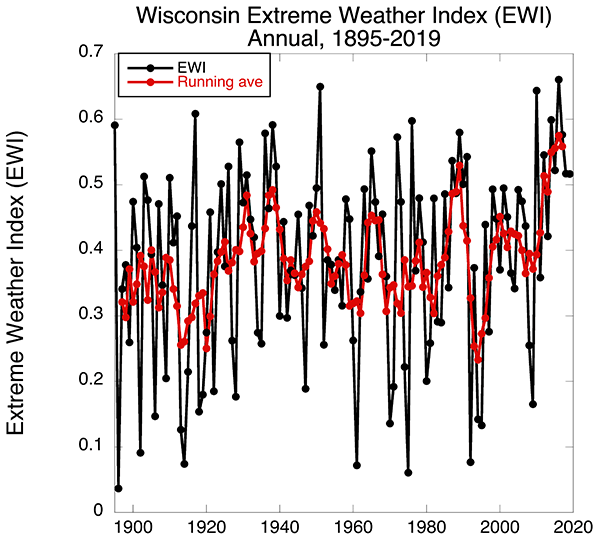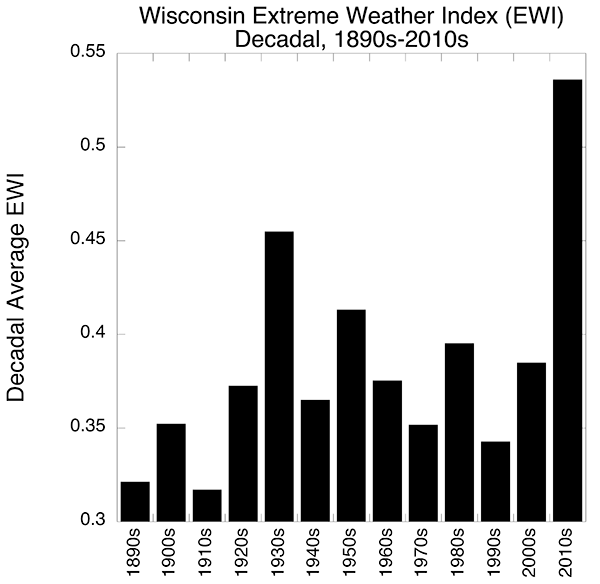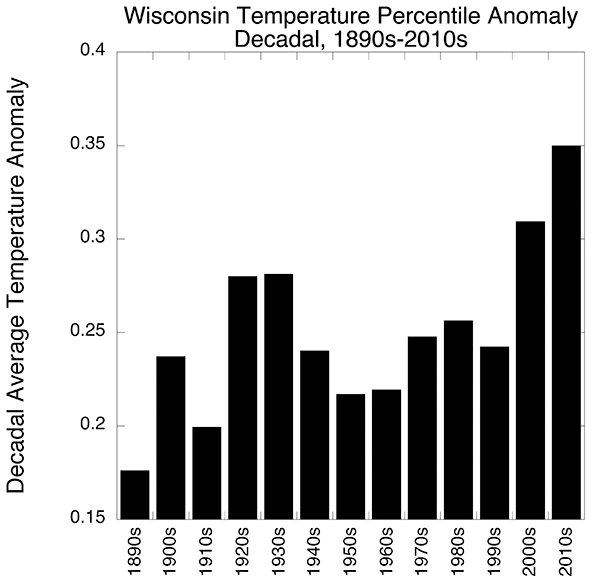The Extreme Weather Index (EWI) is a metric developed by Wisconsin State Climatologist Steve Vavrus to quantify extreme weather in Wisconsin. It equally weights temperature and precipitation rankings on timescales of at least one month.
The statewide EWI based on annual temperature and precipitation shows unusually high values in recent years (through the 2010s). The highest EWI of any decade was the 2010s, caused by a record-high contribution from extremes in both temperature and precipitation.
A more detailed follow-up analysis of the EWI by month/season and region will shed light on how Wisconsin’s extreme weather has varied over time.



